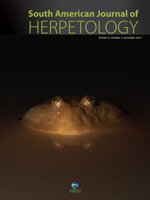The anole lizards represent a conspicuous group of vertebrates due to their high species number and abundance in different habitats. Despite the high richness of anoles in Mexico (48 species), to date only a few studies have been performed on their ecology. Because different groups of parasites can provide ecological information on their hosts, we studied the helminths parasitizing Anolis uniformis, one of the most common anoles from southern Mexico. We examined individuals from the tropical rainforest in Laguna Escondida, Los Tuxtlas, Veracruz and we found eight parasitic taxa: seven nematodes (Acuariidae gen. sp., Aplectana sp., Oswaldocruzia sp., Physocephalus sp., Piratuba sp., Rhabdias tobagoensis, and Strongyluris panamaensis) and one acanthocephalan (Centrorhynchus sp.). All taxa represent new records for the host. Additionally, the genera Centrorhynchus, Oswaldocruzia, Physocephalus and Strongyluris are new records for Mexican anoles, while the genus Aplectana is a new record for all anoles. At the genus level, the taxonomical composition of the helminth fauna of A. uniformis is similar to that reported for Central and South American anoles. The life cycles of the parasites found suggest that these lizards may acquire most nematodes from the forest floor while hiding. Life cycles also support that A. uniformis has a mainly insectivorous diet and reflect the presence of mosquitoes that transmit microfilariae to the lizards when feed on their blood.
How to translate text using browser tools
1 December 2014
Helminth Parasites of the Lesser Scaly Anole, Anolis uniformis (Squamata: Dactyloidae), from Los Tuxtlas, Southern Mexico: Evidence of Diet and Habitat Use
Elisa Cabrera-Guzmán,
Lorena Garrido-Olvera
ACCESS THE FULL ARTICLE
Biological interactions
neotropical
parasitism
rainforest
Reptilia





